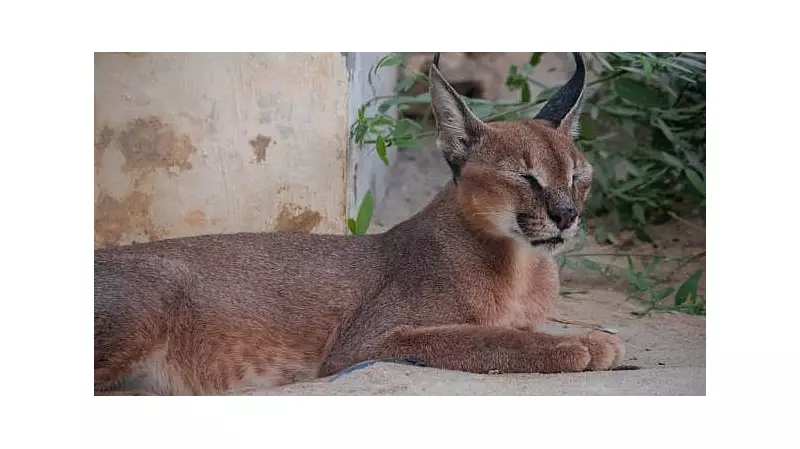
In a remarkable wildlife discovery that has excited conservationists across India, a rare Asiatic caracal has been spotted and photographed at Ramgarh in Rajasthan's Jaisalmer district. This sighting marks the first documented evidence of this critically endangered wild cat in the region after nearly two decades of absence from official records.
The Historic Sighting at Ramgarh
The significant discovery was made by forest department personnel who managed to capture photographic evidence of the elusive feline. The caracal was spotted specifically in the Ramgarh area of Jaisalmer district, creating tremendous excitement among wildlife experts and conservationists who had feared the species might have disappeared from the region entirely.
This sighting is particularly important because the Asiatic caracal population has been declining rapidly across its native habitat range. The species is listed under Schedule I of the Wildlife Protection Act, 1972, granting it the highest level of legal protection in India. Forest officials have confirmed that this represents the first official recording of the species in this area in approximately twenty years.
Understanding the Asiatic Caracal
The Asiatic caracal (Caracal caracal schmitzi) is a medium-sized wild cat distinguished by its characteristic black-tufted ears and sleek, muscular build. These remarkable predators are known for their exceptional jumping ability, capable of leaping several feet into the air to catch birds in flight.
Historically, caracals were found across various regions of northwestern India, but their numbers have drastically declined due to habitat loss, poaching, and diminishing prey populations. The species primarily inhabits dry forests, savannas, and semi-desert regions, making the arid landscape of Jaisalmer potentially suitable habitat for these elusive cats.
Unlike their African counterparts, the Asiatic caracal population has become increasingly fragmented and isolated. The International Union for Conservation of Nature (IUCN) recognizes the precarious conservation status of this subspecies, though comprehensive population data remains limited.
Conservation Implications and Future Efforts
The unexpected appearance of this caracal in Jaisalmer has significant implications for wildlife conservation strategies in Rajasthan. Forest department officials have indicated they will intensify monitoring efforts in the Ramgarh area to determine if this individual is part of a larger, previously undetected population.
Conservationists emphasize that this discovery highlights the importance of protecting arid ecosystem habitats that are often overlooked in wildlife conservation planning. The sighting suggests that with proper protection and habitat management, critically endangered species can persist in areas where they were thought to be locally extinct.
Wildlife experts are now calling for enhanced protection measures in the region, including:
- Increased anti-poaching patrols in potential caracal habitats
- Community engagement programs to raise awareness about the species
- Scientific studies to assess the population status and distribution
- Habitat restoration initiatives to support prey species recovery
The Rajasthan forest department has expressed commitment to protecting this rare feline and its habitat. This fortuitous discovery serves as a powerful reminder that even species on the brink of local extinction can reappear when habitats are preserved, offering hope for conservation efforts targeting other endangered wildlife across India.





